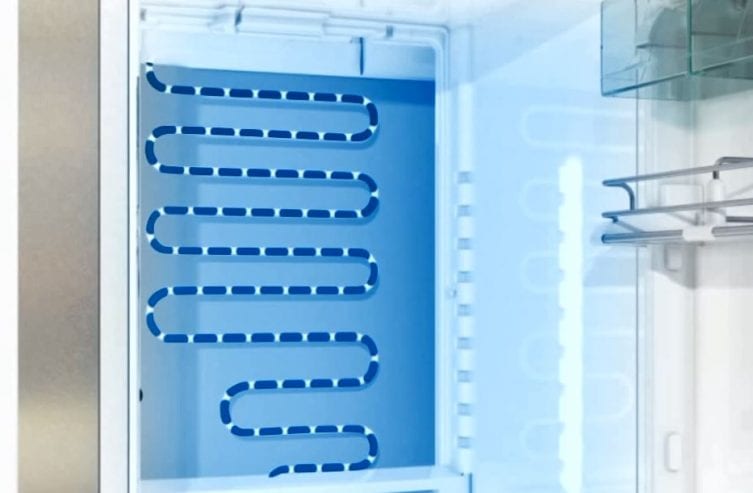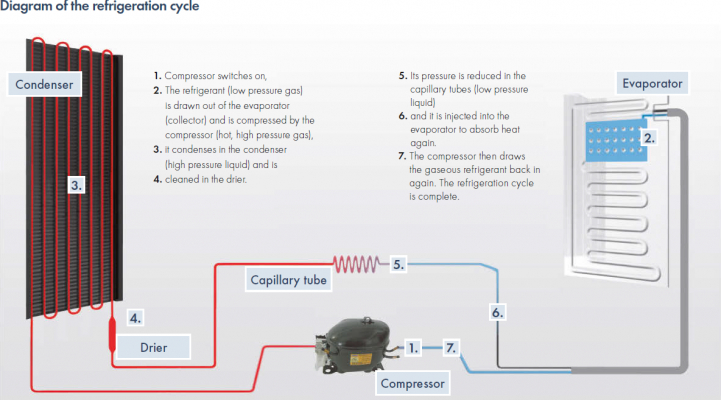
Obviously, refrigerators cool products and groceries, but they do this in a way that you would not necessarily expect! Coldness isn’t drawn into the refrigerator from the outside; rather, heat is drawn from the food and released to the outside surroundings.
When we first hear about the refrigeration cycle obviously our reaction will be: “Refrigeration cycle? That’s way beyond me!” But the refrigeration cycle in a fridge isn’t actually all that complicated. So today, we are answering the question: “How does a refrigerator work?” in a simplified way!
In modern compressor refrigerators, the cooling system works as follows:
- A gaseous coolant is compressed by the compressor, and heats up during this process.
- In the condenser (the black condenser coils are at the rear of the appliance), the gas condenses, with heat dissipated to the outside environment.
- The resulting high pressure liquid coolant then flows through an expansion valve or capillary tubes to reduce its pressure, and regulate its flow into the evaporator.
- In the evaporator, the low pressure liquid coolant absorbs heat from the fridge interior, changing to a low pressure gas in the process, and then flows on to the compressor.
Taking a closer look, additional components are involved in the process and these are shown in the diagram below:

It’s easy to observe the ‘refrigerator cooling principle’ in action. Have you ever been on holiday and gone for a swim in the sea or a pool? When you get out of the water and lie on your sun lounger, you start shivering, despite it being 30°C! This is because as the water evaporates from your skin it extracts heat energy from your body, and this results in you feeling cold. In simple terms, this is the same principle used by refrigerators.
To give you another example: try the following as you’re reading the rest of this blog: lick the back of your hand and then blow on it. You will notice that it feels cold, and this demonstrates that cooling occurs as the result of evaporation. The process is no different in your refrigerator – it’s not coldness being brought into the appliance, it’s heat being extracted from the items stored and expelled to the outside surroundings – which explains why the back of a refrigerator is always warm!
Incidentally, many people imagine the coolant to be a large volume of liquid that circulates around the refrigerator. That’s not the case at all! The coolant is actually a gas and there is only between 20-65 grams of the coolant in the cooling system, depending on the model.
Watch our video on the refrigeration cycle:
Do you have any questions about the refrigeration cycle or how refrigerators work? Then write to us! Use the comment function below this post or start/join in discussions with us on Facebook.